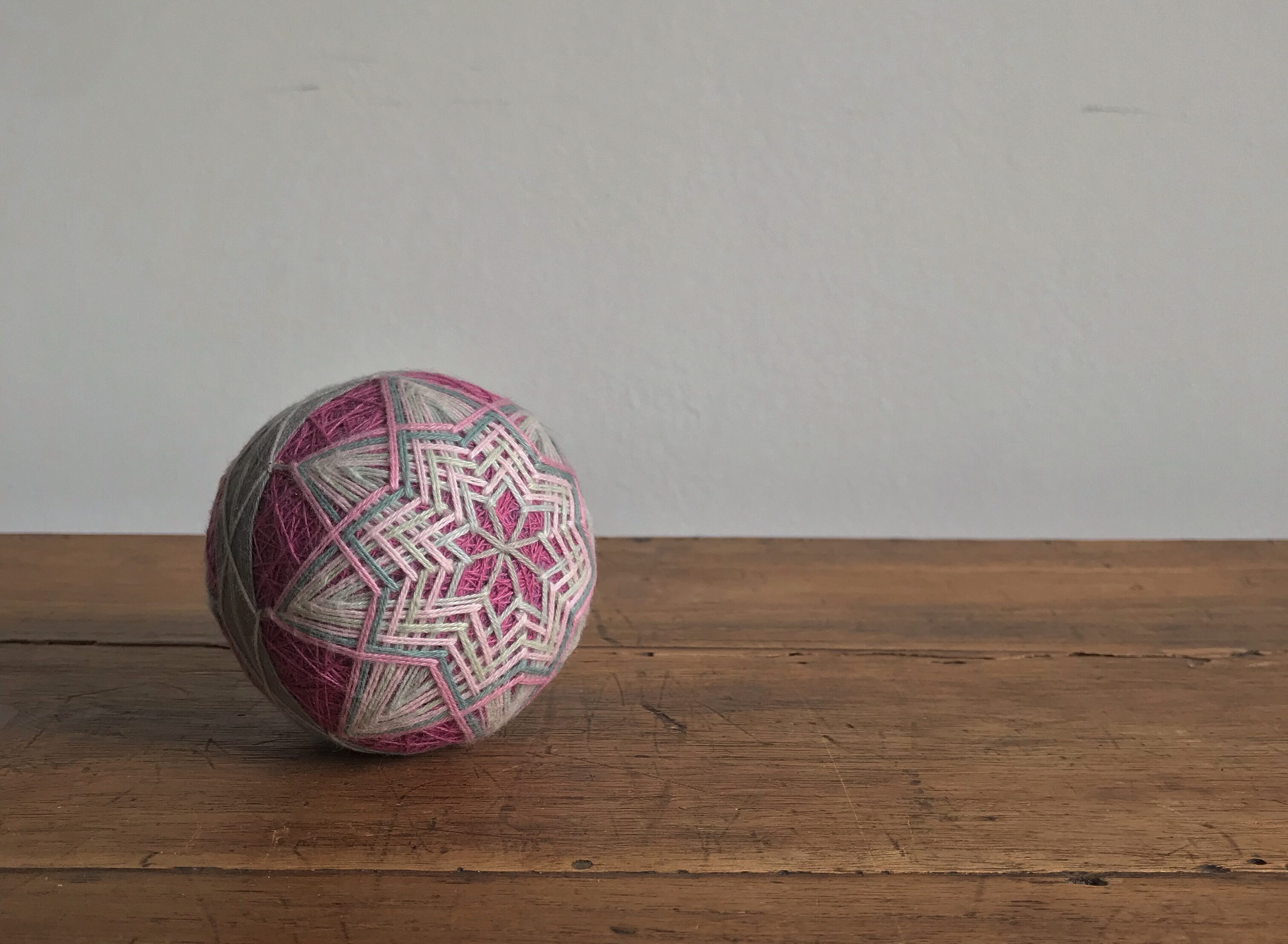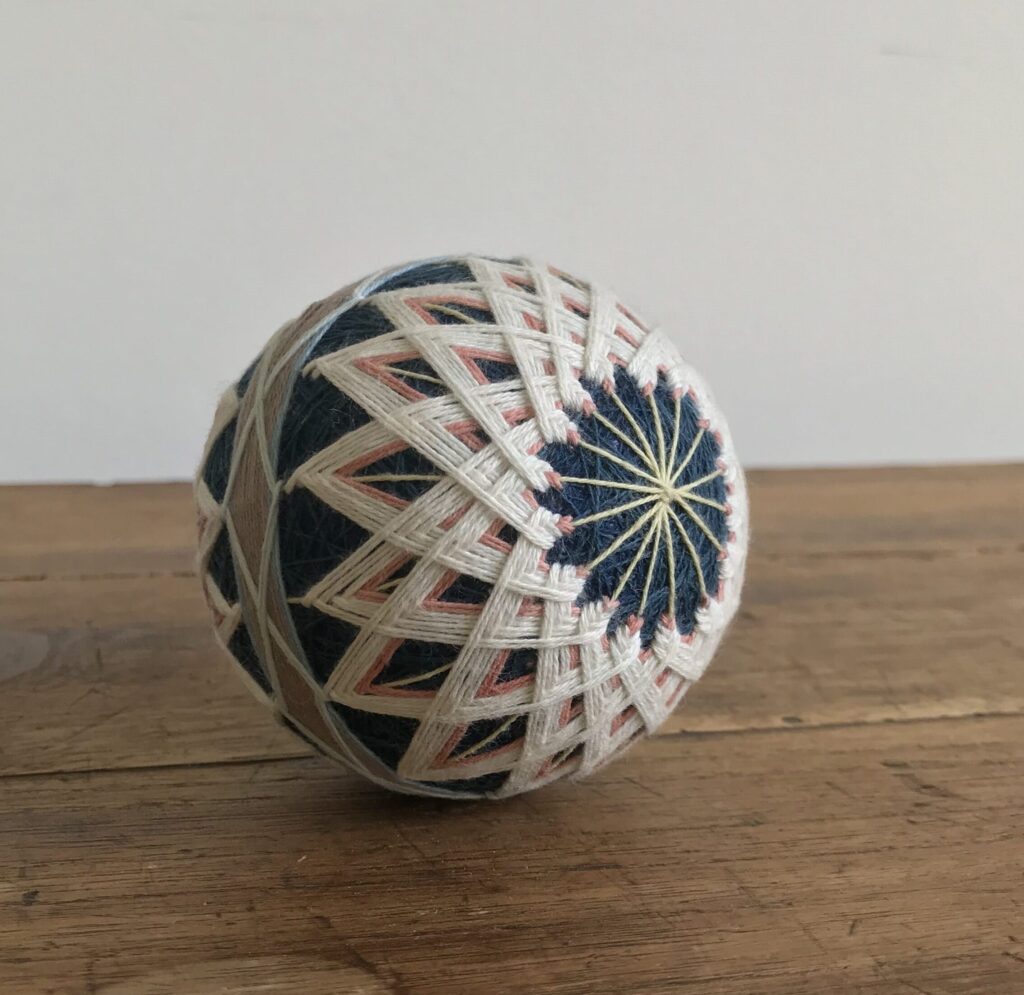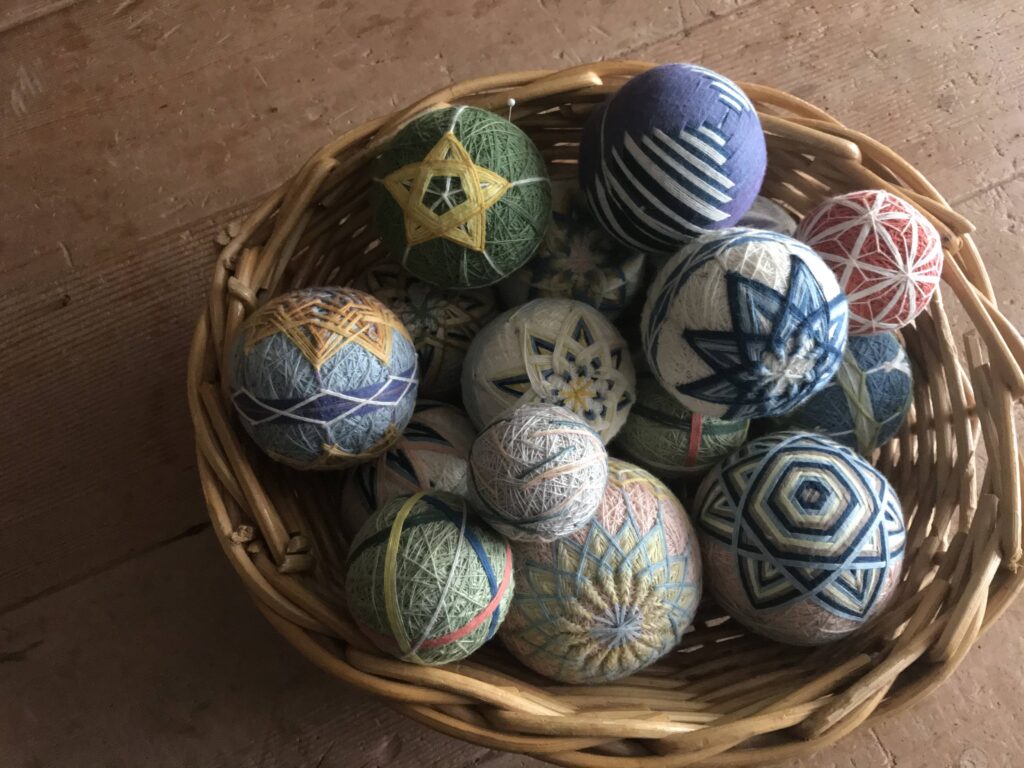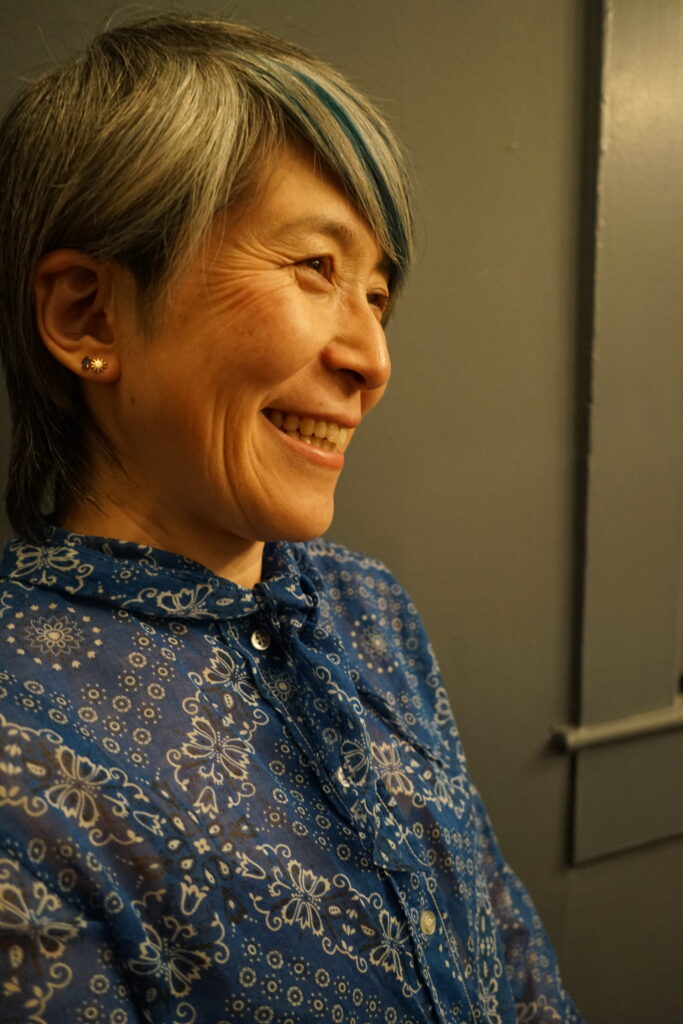
On Saturday, April sixth, Tatter will be hosting Yoriko Yamamoto for an in-person workshop on stitching the Japanese folk art of Temari (手まり). Temari (hand-ball) was originally made in many households for children’s play. As you learn Temari Ball assembly and pattern making, you will have the opportunity to connect deeply with sustainably sourced materials that have been thoughtfully collected and curated by our teacher, Yoriko. Many have shifted away from natural materials for the sake of convenience, but Yoriko’s approach recenters this tradition in impermanence, mindfulness, and quality. This particular Temari style requires intermediate sewing skills, but fear not if you’re a novice—Yoriko will guide you through simpler styles. We spoke with Yoriko about her practice and how she came to make and love temari.

How did you get started making temari?
I grew up in Japan, but I had actually never seen Temari before. I moved to the United States when I was 23 to study art education, and when my child was born I began to work as a handwork teacher at a Waldorf school. There was a temari curriculum, but the first one I saw was styrofoam inside, and I wasn’t very interested. When I went back to Japan to observe at a Waldorf school, one classroom had the temari making materials out and during free time kids would just go and collect the rice husks and start a new temari. I loved that, and I wanted to learn, so I went to a place in the neighborhood where I grew up and started learning from these two women there.
I’ve also been plant dyeing for more than a decade using plants I’ve gathered so I wanted to incorporate that. Part of the reason I love plant dyeing is that the plants have medicinal qualities. I like the idea that when you stitch using a plant dyed thread you are giving the medicinal qualities of the plant to the temari.

I know that historically, temari were made to be children’s toys from textile scraps. Do your students play with theirs?
Traditionally they are made for children, crafted out of whatever they had at hand, with very simple stitches. Others are really beautiful and complicated and not for play. They’re more like art objects, and the ones my students make tend to be more intricate and decorative, so I’ve never heard them play with the temari.
When I teach seventh grade, they tend to struggle with the beginning but once it’s close to complete and we start talking about the different techniques and shapes they get really into it. Each design had its own meaning and well wishes, like for abundance or to be a good worker. They just love it, and I think it starts to sink in that all the stitching they’ve been doing is meditative and intentional. They get that repetition is the beauty of a stitching practice.
For example, when a child is born you wrap the child in this flax pattern. My parents sent me a cloth with a flax pattern on it when my daughter was born. The idea is that flax grows quickly and you want the child to grow strong and fast. One of the stories I heard when I was researching temari was that you give a temari with a flax pattern to a newborn baby and then bury it in the ground when they turn a year old. They’re completely compostable. I love that it’s not meant to be permanent. You can make it and stitch it and play with it or give it away and then when you’re done you can bury it in the ground.


OUR TEACHER
Yoriko Yamamoto
Yoriko Yamamoto (she/her) was born and raised in Tokyo and grew up making crafts with her mother in their family tea shop. She moved to San Francisco to study Art Education in graduate school. She has continued to work with students of all ages, helping them to apply art to their daily life. She is passionate about sharing her knowledge about both contemporary art and practical arts, such as sewing and weaving. Yoriko is a full time Waldorf Handwork teacher and has been a plant dyer for more than a decade. She loves teaching Temari, a process she sees as a form of prayer, meditation, and well-wishing.@temariyori
